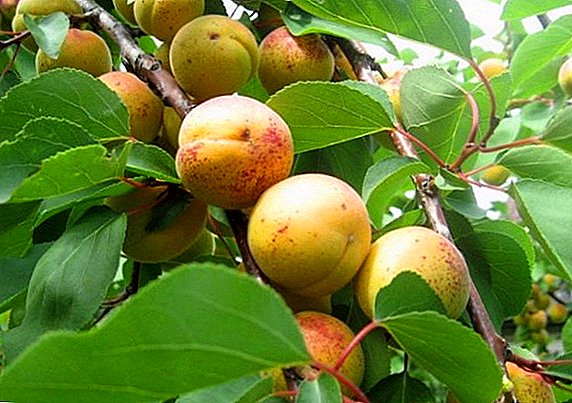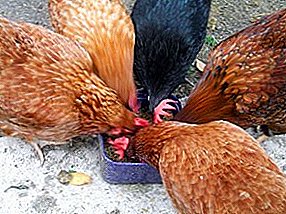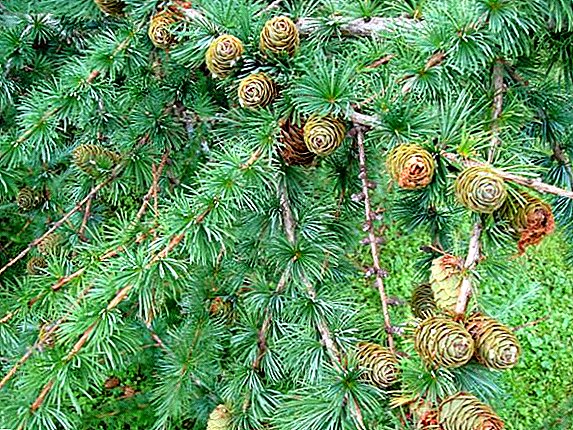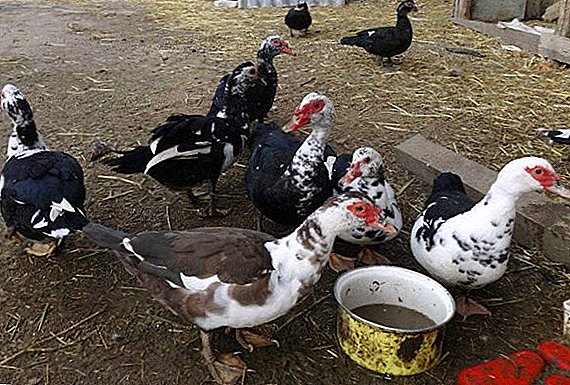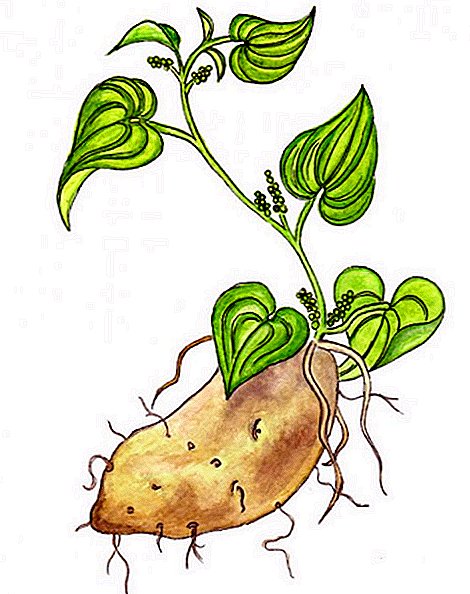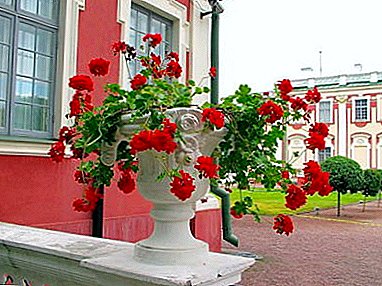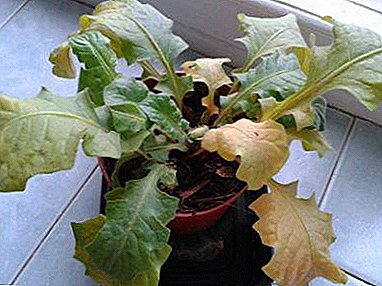
Gerberas are luxurious flowers whose petals are painted in various shades. These bright flowers will create a cozy atmosphere and decorate any room.
Came a gerbera in our region from South Africa. The scientist Gronovius discovered the view. The name of the flower was in honor of the doctor Gerber.
Is the plant suitable for indoor growing and why does the leaves turn yellow and dry? We will deal with this in this article. We'll tell you about the common problems of gerbera and give detailed instructions on how to cure this bright flower.
What is this plant?
Gerberas are perennial herbaceous plants that belong to the Astrov family. Flowers are very heat-loving, in natural conditions they grow only in regions with a mild and warm climate. The homeland of the plant is South Africa, the island of Madagascar and the Southeast region of Asia.
Outwardly, gerberas resemble chamomile, but their colors are very diverse.: from bright cherry to delicate cream shades. Gerberas are most often grown in greenhouses, less often - in room conditions.
Excerpts from the botanical description:
- The leaves are oblong, pinnately dissected, have a light green color.
- Stem shortened.
- Inflorescence in the form of baskets (typical for the representatives of the Astrovs).
- The method of propagation of gerbera - seeds.
- Gerber bloom period is long: from 3 to 4 months.
Propensity to disease
Gerberas are quite disease-resistant plants, but they can also be affected by bacterial, viral and fungal diseases. Among the most frequent:
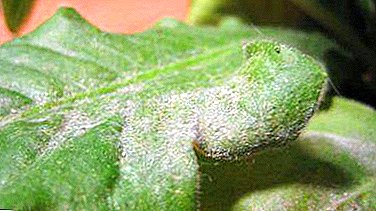 Alternaria;
Alternaria;- sclerotinosis;
- mosaic;
- powdery mildew;
- different types of rot;
- defeat bush pests.
Most often, gerbera diseases are the result of improper care.. Yellowing and drying of the leaves accompanies the withering of buds and inflorescences, the appearance of plaque, and the decay of the root system. What to do in this situation than to treat?
How to recognize the disease?
Yellowing leaves - the first and very dangerous signal, which indicates a variety of diseases. How the leaf plate turns yellow depends on the specific cause (improper care, illness, pest attack).
Light yellow or brown spots of limited shape may appear in the center of the leaf. The yellow border can also be seen along the edges of the sheet plate. If the cause is not eliminated, gradually the yellowness covers the whole sheet. Next comes the deformation of the leaf plate and other parts of the plant. The leaf gradually necrotic (dies).
Main reasons
The first and main reason - improper or poor-quality care. Gerberas are very light-loving plants by nature., but on hot summer days their leaves fade in the sun. Gerberas in pots in the heat are recommended to be removed in a less sunny place or shaded with a cloth.
Important! Improper feeding also leads to yellowing of the leaves. For the correct development of the green part, nitrogen-containing fertilizers are required, and during the period of active flowering, gerberas need top dressings with a high content of potassium (for information on why room gerberas do not bloom and the rules of care, read our material).
Although gerbera loves high humidity, it is not recommended to spray it. A pot with a plant is enough to put in a tray with moistened pebbles. Gerbera leaves may turn yellow from excessive moisture. Do not often and abundantly water the plant, and especially in the dormant period.
The difference in the care of the flower at home and in the store
The growing conditions of gerberas in the store are very different from home (how to care for room gerbera?). This is important to consider at the time of purchase of the plant.
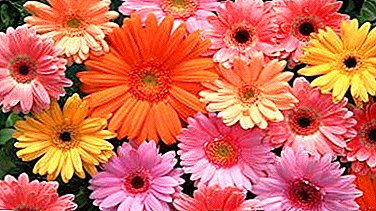 In the store, the plant is fed with special means that prevent growth. This affects the increase in chlorophyll in the leaves, making them dark green.
In the store, the plant is fed with special means that prevent growth. This affects the increase in chlorophyll in the leaves, making them dark green.- After gerberas get home from the store, their leaves become longer and start to turn yellow. To help the flower in such a situation, you need to provide him with good lighting and temperature control.
- You can not replant gerbera immediately after purchase. You need to wait 2-3 weeks and only then carry out the transplant. This will help the plant to avoid stress, it will transfer the procedure less painfully.
Consequences of disease
Gerberas often affects fusarium. In this disease, the plant turn yellow and fall off all the leaves, and in their place, disease-causing spores are actively developing.
The leaves turn yellow and wither due to the development of fungal infections. The root system suffers from these diseases - the roots begin to rot. The leaves lose their elasticity, become lethargic and acquire a yellow-brown shade.
The next reason is powdery mildew. This disease is manifested on the leaves with white spots. Also yellowing of the leaf plate is often a sign of infestation by parasites. Among them are spider mites, aphids, whiteflies.
Next, a visual video of how a gerbera looks, struck by powdery mildew:
Detailed instructions on how to cure a flower?
When the first symptoms of any disease are detected, all affected parts of the plant should be cut with a sharp knife. Place the cuts to process charcoal or ash. If the putrefactive processes have affected the root - remove it from the pot, hold it in warm water, cut off the dead spots and sprinkle it with ashes. Then the gerbera needs to be transplanted into a new soil substrate.
| Cause | How to save the plant? |
| Gray rot | Treat all plant parts with Fundazole (stick to home flower dosage). |
| Root neck rot | For the treatment of flower spray Fitosporin. In order not to be mistaken with the dosage, the drug is best purchased in the form of a ready-made solution or paste. |
| Fusarium |
|
| Mealy dew | For the fight using fungicides (Topaz, Fundazol). Can be used for treatment and for prophylaxis. |
| Alternaria | When the first symptoms are found, spray the plant with any systemic fungicide (Ridomil Gold). |
| Spider mite |
|
| Whitefly, aphid, shield |
|
Preventive measures
 First you need to choose the right place for the gerbera. It should be well lit, as this plant is light-requiring. Gerbera should receive good coverage 12-15 hours a day.otherwise yellowing of the leaves is inevitable. From October to March, the plant must be provided with additional lighting, and on hot summer days it must be removed from the window sill so that the leaves do not burn in the sun.
First you need to choose the right place for the gerbera. It should be well lit, as this plant is light-requiring. Gerbera should receive good coverage 12-15 hours a day.otherwise yellowing of the leaves is inevitable. From October to March, the plant must be provided with additional lighting, and on hot summer days it must be removed from the window sill so that the leaves do not burn in the sun.
The soil plays a big role in the life of the gerbera. Proper air exchange and humidity are the main qualities of the soil. It is prepared from field land, peat, sawdust and bark. The soil should be of medium acidity. In no case can not be fertilized with humus and compost.
It is extremely important not to flood the plant and follow the watering schedule.. It is forbidden to use cold water for irrigation. The optimum temperature is not lower than 20 degrees. It is also important that there is no sharp difference between the water temperature and the air temperature in the room. For additional humidification of the air in the room you need to use a fine atomizer.
So, so that the leaves of the gerbera do not turn yellow, it is enough to observe the light regime, control the humidity of the soil and the air in the room. If the plant is still affected by any disease, measures should be taken immediately to combat it. Timely assistance will save the flower from death.


 Alternaria;
Alternaria; In the store, the plant is fed with special means that prevent growth. This affects the increase in chlorophyll in the leaves, making them dark green.
In the store, the plant is fed with special means that prevent growth. This affects the increase in chlorophyll in the leaves, making them dark green.